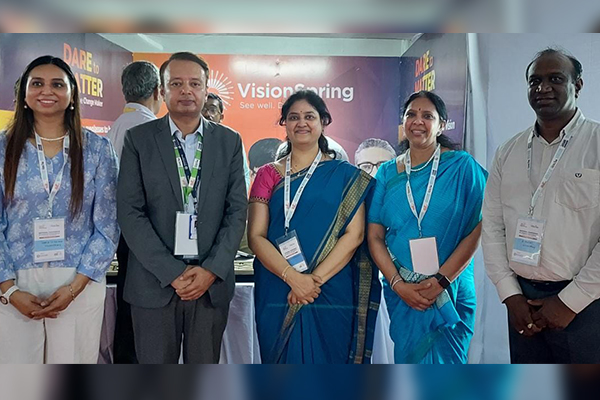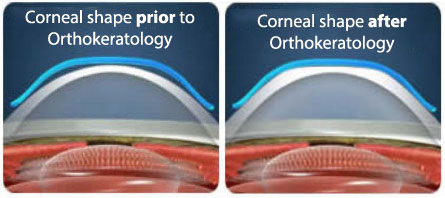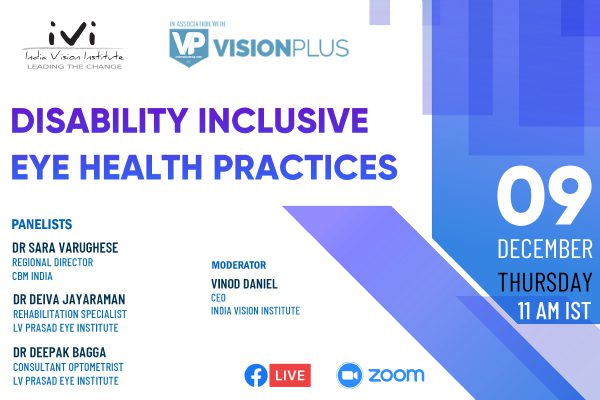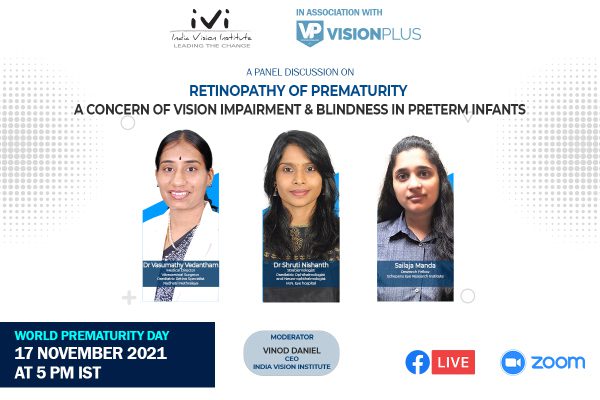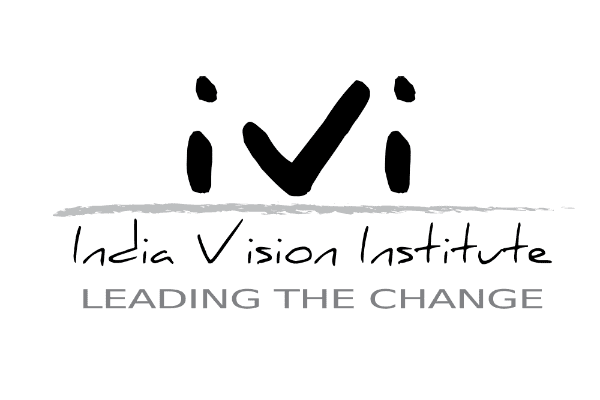Eyecare professionals work hard every day to provide their patients with the best eyewear possible in order to deliver sharp, crisp, and undistorted vision. Unfortunately, a few factors contribute to distortion including the lens design, the lens material, and the frame.
 Because the creation of distortion is multifaceted, HOYA VISION CARE, North America has developed a distortion controlling eyewear system it calls HOYA DF Optics that controls distortion through both the lenses and the frame. This unique eyewear system promises to give your patients a distortion-free visual experience.
Because the creation of distortion is multifaceted, HOYA VISION CARE, North America has developed a distortion controlling eyewear system it calls HOYA DF Optics that controls distortion through both the lenses and the frame. This unique eyewear system promises to give your patients a distortion-free visual experience.
Learning Outcomes:
At the completion of this course, the reader should be able to:
• Define distortion
• Give examples of how distortion is created by a lens and a frame
• Explain how to eliminate distortion caused by a frame and how it is controlled in a lens
• List at least three advantages of HOYA’s DF Optics eyewear system
DISTORTION. It’s such a simple sounding word, but while it sounds simple, the impact of it on eyewear can be substantial. Distortion affects the size, shape, and image quality of what patients see through their eyeglass lenses so controlling it should be a major factor in producing a quality eyewear outcome. HOYA VISION CARE, North America’s new HOYA DF™ (Distortion Free) Optics complete eyewear system squarely takes on this optics challenge in a unique way; by addressing distortion that’s created by both the lenses and the frame they’re glazed into. It does so by teaming its iD® and iQ free-form lenses with Phoenix™ lens material, its Super HiVision EX3™ anti-reflective (AR) treatment, and a unique mounting system—all in a single stress-free, distortion controlled package.
Distortion Basics


Distortion is an optical error that affects a person in two fundamental ways. First, it creates an inaccurate representation of objects being viewed when the eyes are looking at a single location (a static eye). And second, it creates a swimming (and sometimes upsetting) effect when the eyes scan across or around the lenses (a dynamic eye). Since distortion can lessen the quality of vision through a lens and has the potential for causing visual discomfort or even making someone nauseous, eliminating it should be a prime factor in eyewear design.
While distortion results from increasing or decreasing magnification, it is caused by two basic contributors: by lens design and mechanical factors. To say this another way, distortion can be caused by a lens’ design and by the frame it’s mounted on or into. This
means that if you want to eliminate distortion, you really need to manage it at its two prime sources—the lens and frame used to hold it before the eye.
The Frame’s Contribution
Frame and lens mounting methods vary widely using beveling, pressure, drilling, cord suspension, and others techniques to hold lenses in a frame. With nearly 17 million pairs of eyeglasses sold each year, it easy to understand why eyecare professionals (ECPs) take little interest in the affects of distortion on a patient’s vision caused by a rimless or semi-rimless mounting, and even less interest in distortion caused by rimmed frames. Essentially, ECPs have become complacent about this aspect of eyewear. This is unfortunate because a frame or mounting can cause a good amount of distortion in the lenses glazed in (or on) it.


Even with the most precise sizing during lens edging along with careful insertion, a certain amount of stress, sometimes significant, can be induced into the lens. Remember that some amount of circumferential pressure is needed to hold a lens into a rimmed frame, otherwise it will fall out. In other words, you really can’t avoid the stress induced by a rimmed frame on a lens.
Figure 2 illustrates a lens that has been carefully sized during edging and inserted into a metal frame. In order to see the internal pressures that are created, the frame and lens have been placed under a polariscope (two polarizing filters crossed at 90o). This device shows internal stress in a lens. As you can see, the lens on the upper left of the illustration shows a significant degree of internal stress at various locations around the lens. Where did this come from? It came from the lens not being an identical match for the shape of the frame. Even though the lens shows no air gaps around its circumference and the eyewear block closed without forcing it during lens insertion, the lens still shows significant internal stress.This internal stress can cause distortion in the lenses.
Don’t be fooled into thinking this problem only occurs with metal frames. As you insert a lens into a warmed zyl frame, it stretches, allowing you to insert the lens. The problem occurs when the frame cools. As it does, it tries to shrink back to its original size. This
exerts some significant circumferential force around the lens that’s similar to the one exerted by the metal frame eyewires just discussed. Look at the image in the upper right corner of Figure 2 and you’ll see the stress caused by the plastic frame in the photo. That stress can also cause distortion in the lenses.


With rimless and semi-rimless mountings, it’s easy to understand how their mounting systems and hardware can cause lens stress and distortion. Take drilled rimless eyewear for example. The lenses in this eyewear type are drilled, which causes stress around the drill holes. Some lens materials are more prone to drilling problems like polycarbonate.
If not drilled slowly and with a sharp drill bit, polycarbonate lens material will melt during drilling. It can also chip and flake during drilling. These circumstances cause distortion around the drill holes. As the mounting hardware is attached, the pressure exerted from tightening the mounting hardware can cause stress inside the lens.It can also cause stress fractures around the rim of the holes. Drillmounted, semi-rimless mountings cause the same issues. The image in the lower right corner of Figure 2 illustrates these problems.
Cord mounted rimless (sometimes called Rimlon or Nylor rimless) also demonstrates stress and distortion problems. In this type of eyewear, the lens is grooved around its circumference and held in place using a nylon cord or some other type of material around
the outside of the lens that is tightened to secure the lens in place in the mounting’s partial rim. The grooving, along with the circumferential pressure of the cord, can cause internal lens stress. If the lens is not an identical match to the portion of the frame it contacts, internal stress can also be created. The image in the lower left portion of Figure 2 illustrates this.
HOYA DF – The Frame
To avoid all these stress and distortion creating issues, a new type of frame needs to be used that doesn’t induce distortion from stress, warpage, or deformation. How would you do that? Based on the issues raised above, you’d have to develop a frame with no rim; did not need the lenses to be inserted into its eyewires; and was not drilled, grooved, notched, etc. If the lenses were properly secured into a frame like this, the result would be no distortion caused by the frame. That’s exactly what the Avantek Mounting System™ technology is all about that HOYA uses in its stress-free HOYA DF eyewear system.


You’ll also find that mounting the lenses this way causes no visual obstructions through the lenses because there are no screws or other mounting hardware devices blocking the lens in several places. And here’s another pleasant benefit—there’s nothing to catch a microfiber lens cleaning cloth on because there are no screws or other mounting hardware sticking out of the back side of the lenses. Since it doesn’t have any rim, there is nothing to block vision around the lenses either.
To ensure HOYA’s DF eyewear system was strong and durable, the company had the product tested by two independent optical testing laboratories including COLTS Laboratories. Testing revealed that the tabs of the lenses in a HOYA DF stress-free frame
are more resistant to breakage and can take more abuse than the best-selling drill-mounted lenses, but like any lens, they are not unbreakable. The frames have the strength and durability that titanium is known for, but they too are not unbreakable. If the mounting should separate, do not attempt to “super glue” it or use some other means to re-secure the lenses. Instead, return it to your lab for a proper remounting.
The Avantek Mounting System is made with a titanium alloy specifically optimized for eyeglasses and other medical devices. Produced exclusively for HOYA by the company that brought the ophthalmic industry Flexon®, innovation is at the core of this mounting. The titanium alloy material makes the frames lightweight, strong, durable, anti-corrosive, and flexible. Teamed with its rimless design and HOYA’s Phoenix™ lens material, the DF Optics eyewear that results is exceptionally light weight.
DF – The Lenses


while providing sharp, clear vision.
The concept behind IDSD is everyone’s eyes are unique and so their lens correction should also be unique. HOYA’s Free-Form™ Design Technology analyzes each eye’s correction requirements and its IDSD technology shapes both sides of the lens to correct it. The front of the lens is designed to address the vertical component of vision that affects magnification and distances. This minimizes eye movement when transitioning from far to near distances, which makes the wearer more comfortable. The back surface is designed to address the horizontal component of vision that affects power changes from side to side. This brings unwanted astigmatic powers closer to the eye, reducing the effect on peripheral vision and producing wider, undistorted visual fields at all distances, regardless of the prescription. All other progressive lens designs limit the vertical and horizontal design components to the same side of the lens. Only HOYA customizes the lens on both sides for a personalized vision correction.
HOYA then performs Virtual Vision Evaluation to map Skew Deformation to determine the swim effect experienced by each eye. It also does Point Deformation mapping, which quantifies the deformation at each point in the visual field. When all this is done, HOYA integrates the two sides with their Balanced View Control evaluation, which tracks the movement of objects across the retina that looks for distortion occuring along straight lines or flat surfaces. The system then corrects the image at all deformation points, ensuring the clearest vision in all directions. All this lens technology brings you free-form lenses that are optically optimized, customized, and personalized for the wearer in order to give him the clearest, most comfortable and distortion-free vision possible.
The stress-free HOYA DF eyewear system uses HOYA freeform lenses along with its Phoenix lens material. Being Trivex® based, Phoenix has all the properties you’d expect from this material, including light weight, high-impact resistance, and optical clarity. Phoenix lenses are also internally stress-free. They’re specifically manufactured that way, which means Phoenix lens material does not contribute any distortion to the lens or its optics due to stress.
To complete the HOYA DF eyewear package, HOYA uses its Super HiVision EX3 AR treatment that almost completely knocks out lens surface reflections. The chemistry of the Super HiVision EX3 treatment is matched to the substrate (lens material) being
treated so it is an optically perfect match. This substrate matching ensures the best possible optical results from the Super HiVision EX3 treatment. Super HiVision EX3 is also oleophobic and hydrophobic so it wards off lint, dust, and other debris as well as oils and smudges. It’s also easy to clean; just a couple of swipes with a microfiber lens cloth will do it.
Patient Benefits


• The lenses are essentially distortion-free
• The lenses are highly impact resistant and optically clear
• Vision is unobstructed from edge to edge due to no mounting
hardware intruding into the lens area to block vision
• The eyewear is exceptionally light weight
• The mounting offers superior durability in comparison to drillmounted
rimless and semi-rimless frames
• There are no screw ends or other hardware to catch a microfiber
cloth when cleaning the lenses
• The frame design opens up a whole new fashion category
• The eyewear is available in HOYA free-form progressive, single vision,
and flat-top lens designs as well as polarized single vision lenses
• The Super HiVision EX3 AR treatment makes the lens reflection-
free while warding off dust, lint, minute debris, liquids,
oils, and smudges
• The lenses offer superior scratch resistance
• The lenses are easy to clean
• HOYA DF eyewear is ideal for contact lens wearers when they
are not wearing their contacts since the eyewear is nearly invisible
and is ultra lightweight
Simple To Prescribe, Offer, and Order
HOYA makes it easy to prescribe, offer, and order the HOYA DF eyewear system. As far as prescribing, what could be a better option than HOYA’s DF eyewear system? With all its lens features, its unique mounting system, and all the benefits listed above, what could be a better vision solution for a patient? Those who want the best will quickly see the high return they receive on their investment from this eyewear system, and those who appreciate innovation and fashion will also find this eyewear appealing.
There are eight shapes, each available in two eye sizes, and all are offered in eight colors (see Figures 5A and 5B). This gives the eyecare office 128 options (no custom shapes are available although additional shapes are planned). With all the shape and color combinations, it’s not only easy to help a patient choose a complimentary shape and color, it’s fun. The smart way to do this is to have a fitting kit with all the shapes and colors represented so wearers can easily mix and match the options to come up with their ideal choice. All temple lengths are 145mm. To customize the temple for
some shorter length, the frame’s titanium alloy can be cut to size.
Ordering is just as simple; just use HOYA’s online Digital Vision RxWizard™. This online ordering process presents a form on your computer screen. All you need to do is fill in the fields and press “enter.” In an instant, your order is on its way to your favorite HOYA authorized lab. In fact, you can order any pair of eyeglasses using HOYA lenses and have it processed by your preferred HOYA authorized lab using the Digital Vision RxWizard, not just HOYA DF eyewear. In addition, HOYA DF eyewear is VSP approved.
Fitting kits are available for ordering HOYA DF eyewear. They include eight Avantek frames, an Avantek adjusting tool, a HOYA SS-10 polariscope unit, marketing materials both in English and Spanish, a point-of-purchase display, and more. HOYA offers a two-year unlimited warranty on the lenses and one-year, one-time warranty on the mounting system.
Adjusting these frames is done using the tool included in the fitting kit and an Adjustment Guide provides simple, easy-to-use adjusting procedures. The stress-free HOYA DF eyewear system is a rimless eyewear product delivering unique benefits to patients. Essentially a new category of rimless eyewear, HOYA developed this distortioncontrolled package by combining its iD and iQ free-form lenses with Phoenix lens material, its Super HiVision EX3 AR treatment, and an innovative mounting system—all in a single stress-free eyewear system. Patients will find that this lightweight, strong, durable, and comfortable stress-free complete eyewear package provides them with clear, crisp, undistorted vision in an attractive and technologically advanced way.
Brad Main, an ABO-certified Fellow in the National Academy of Opticianry, is Manager of Training and Technical Resources for HOYA VISION CARE, North America.


